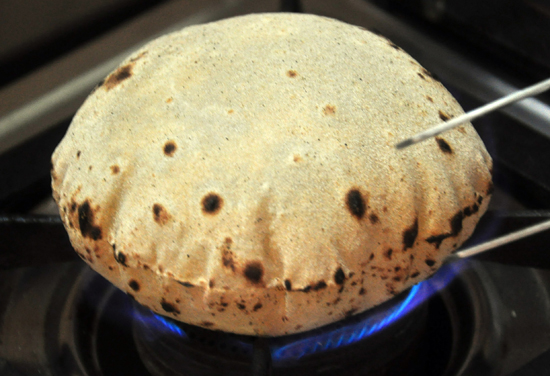Cancer Myth and Fact : In earlier times, people used to bake rotis on earthen stoves. But today every house in the country has a gas cylinder. According to recent research, cooking rotis on gas stove can cause cancer. How true this is, you will get complete information in this video.
For generations, the comforting aroma of freshly baked rotis has filled kitchens across the globe. Traditionally, these flatbreads were cooked on earthen stoves fueled by wood or dung. Today, however, gas stoves reign supreme in most households. But a recent rumor has sparked concern: can cooking rotis on a gas stove actually cause cancer?
This in-depth exploration dives into the science behind this claim, separating myth from fact and empowering you to make informed choices about your daily roti routine.
Understanding Carcinogens and Cooking Methods
The concern stems from the presence of acrylamide, a chemical classified as “probably carcinogenic to humans” by the International Agency for Research on Cancer (IARC). Acrylamide forms in various cooking methods that involve high temperatures, such as baking, roasting, grilling, and yes, even frying. It’s present not just in rotis cooked on a gas flame, but also in deep-fried puris, toasted bread, and many other commonly consumed foods.
However, it’s crucial to understand that the mere presence of acrylamide doesn’t automatically equate to a guaranteed cancer risk. The amount of acrylamide consumed plays a significant role.
Here’s the Key: Focus on Burning, Not Cooking Method
While any cooking method that involves high heat can generate some acrylamide, the real concern lies in burning food. Here’s why:
-
Increased Acrylamide Formation: Burning significantly increases acrylamide formation. When rotis are cooked for extended periods on high heat, especially until charred, they are more likely to contain higher levels of acrylamide.
-
Overall Diet Matters: Our overall dietary pattern plays a crucial role. Regularly consuming large quantities of burnt or heavily browned foods may contribute to an increased risk of cancer. However, occasional slightly browned rotis are unlikely to pose a significant threat.
The Big Picture: Prioritizing Proven Carcinogens
It’s important to maintain perspective. While acrylamide is a potential concern, there are established carcinogens with far stronger and more convincing links to cancer. Here are some examples:
-
Smoking: Tobacco use remains the leading cause of preventable cancer deaths globally.
-
Alcohol Consumption: Excessive alcohol intake is a significant risk factor for several types of cancer, including liver, mouth, and throat cancer.
-
Processed Meats: Regularly consuming processed meats like hot dogs, sausages, and bacon has been linked to an increased risk of colorectal cancer.
Focusing on reducing your intake of these well-established carcinogens is a far more effective strategy for cancer prevention than worrying about the occasional browned roti.
Cooking Rotis Safely: Tips for a Balanced Approach
Here are some tips to enjoy your rotis while minimizing potential risks:
-
Moderate Heat is Key: Use medium heat to cook your rotis. This helps ensure even browning without burning.
-
Flip Frequently: Turn your rotis regularly to prevent them from burning on one side.
-
Embrace Variety: Explore different cooking methods like tawa (griddle) cooking, which allows for more control over browning.
-
Dietary Balance is Essential: Maintain a balanced diet rich in fruits, vegetables, and whole grains. This helps counteract any potential adverse effects from occasional acrylamide intake.
Remember: The occasional slightly browned roti cooked on a gas stove is not a cause for concern. Focus on reducing your intake of established carcinogens and embracing a healthy, balanced diet for optimal well-being.
Watch the video for a more in-depth discussion on this topic, including visuals and potentially additional tips for safe and delicious roti preparation.

